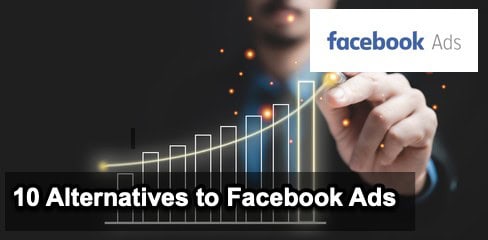
Diversifying advertising strategies is crucial for businesses to enhance their reach and effectiveness. While Facebook Ads have long been a dominant force in online advertising, recent shifts in privacy policies, audience behaviors, and market saturation have prompted marketers to explore alternative platforms.
This article looks into the top 10 best alternatives to Facebook Ads, offering insights into each platform’s unique advantages, target demographics, and cost-effectiveness. Whether you’re a small business owner or a marketing professional, understanding these alternatives can help optimize your advertising budget and strategy.
Platforms such as Google Ads, Instagram, TikTok, and LinkedIn are rising contenders that provide distinct opportunities to reach audiences that may be less accessible via Facebook. This guide will introduce you to each of these platforms and offer practical tips on leveraging their specific features to achieve your marketing objectives. From video-centric platforms that capture dynamic content to professional networks that facilitate B2B connections, this exploration will help you decide which alternatives align best with your business goals.
Recommended article: Facebook Ads: 10 Cons & Disadvantages
Facebook Ads: 10 Best Alternatives
Exploring and embracing various platforms is essential to optimize reach and engagement. While Facebook Ads have been dominant, relying solely on them can limit a business’s potential. This section introduces 10 compelling alternatives to Facebook Ads, each offering unique advantages and opportunities to diversify your advertising strategy and potentially tap into new and varied audiences.
1. Google Ads

Google Ads, formerly Google AdWords, is a formidable alternative to Facebook Ads. It harnesses the power of the world’s most popular search engine. It allows businesses to place ads in search results, websites, apps, and YouTube, targeting users based on their search queries and online behavior. This platform effectively reaches users seeking specific products, services, or information.
- Search Intent Targeting: Ads are displayed based on what users are actively searching for, providing high relevance.
- Wide Range of Ad Formats: Options include text-based search ads, display ads, video ads on YouTube, and app ads.
- Performance Analytics: Google Ads provides detailed analytics, helping advertisers track the success and ROI of their campaigns.
Real-Life Example: A local landscaping company used Google Ads to target homeowners searching for garden design services. By bidding on specific keywords relevant to their services, they appeared at the top of search results, significantly increasing their website traffic and client inquiries. Their ads aligned directly with the user’s search intent, resulting in higher conversion rates.
Pricing Explained: Google Ads operates on a pay-per-click (PPC) model, where advertisers only pay when users click on their ad. The cost per click (CPC) varies depending on factors such as the keyword’s competitiveness, the ad’s quality, and the target audience. Advertisers can set daily budgets to control spending, making it a flexible option for businesses of all sizes.
2. Instagram Ads
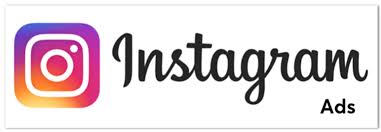
Instagram Ads offer a visually engaging platform ideal for brands looking to connect with a younger, image-conscious audience. As a part of the Facebook family, it provides similar targeting options but emphasizes high-quality imagery and storytelling. This platform is especially effective for the lifestyle, fashion, beauty, and food industries.
- Visual Appeal: Instagram is centered around visuals, making it perfect for brands with solid graphic content.
- Engaged Young Audience: It has a predominantly younger user base that is highly active and engaged.
- Seamless Integration with Facebook: Easy to manage through the Facebook Ads Manager, allowing cross-platform campaigns.
Real-Life Example: A boutique clothing brand utilized Instagram Ads to showcase its latest collection through eye-catching images and short videos. Their campaign resonated well with the fashion-forward audience on Instagram, leading to increased brand awareness and a surge in online sales. Using Instagram Stories and shoppable posts further enhanced user engagement and the shopping experience.
Pricing Explained: Like Facebook Ads, Instagram uses a similar pricing model. Advertisers can opt for cost-per-click (CPC) or cost-per-impression (CPM). The cost can vary based on targeting options, ad placement, and competition for ad space. Advertisers can set a budget for each campaign and choose a bidding strategy that aligns with their marketing objectives.
3. LinkedIn Ads
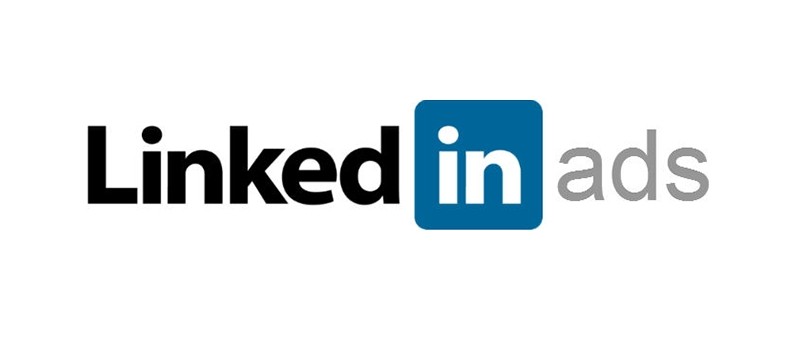
LinkedIn Ads are tailored for B2B marketing, offering access to a professional audience. It’s an ideal platform for targeting based on job titles, industries, and professional interests. LinkedIn is especially beneficial for lead generation and brand building in the professional services and technology sectors.
- Professional Audience: Reach decision-makers and professionals across various industries.
- Advanced Targeting Options: Target users based on professional criteria like job function, seniority, and company size.
- Variety of Ad Formats: Options include Sponsored Content, Message Ads, Dynamic Ads, and more.
Real-Life Example: A software company used LinkedIn Ads to target executives in the tech industry for their new project management tool. By crafting ads highlighting the software’s benefits for team efficiency and productivity, they successfully generated high-quality leads and increased sign-ups for product demos. The professional context of LinkedIn helped me reach the right audience with a business-oriented message.
Pricing Explained: LinkedIn Ads offers several bidding options, including cost-per-click (CPC), cost-per-impression (CPM), and cost-per-send (CPS) for message ads. The platform is generally considered more expensive compared to Facebook or Instagram, but the ability to reach a specific professional audience can justify the higher cost for B2B marketers. Advertisers can set daily budgets and total campaign budgets to control spending.
4. X Twitter Ads
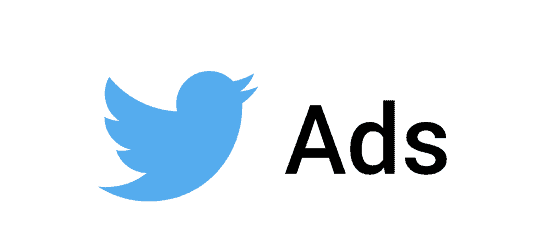
Twitter Ads provide a unique opportunity to engage with users in real-time, making it an excellent platform for topical and event-driven campaigns. Its concise content format is ideal for quick, impactful messaging and trending topics, appealing to various demographics.
- Real-Time Engagement: Ideal for time-sensitive promotions and engaging with trending topics.
- Diverse User Base: Access to a broad demographic of varied user interests.
- Variety of Campaign Objectives: Options for increasing followers, driving website traffic, app downloads, or engagement.
Real-Life Example: A sports apparel brand used Twitter Ads to engage with fans in real-time during a major sports event. By tweeting about game highlights and offering timely promotions, they saw a significant increase in engagement and traffic to their online store. The platform’s immediacy and hashtag feature amplified their reach and relevance.
Pricing Explained: Twitter Ads operates on a bidding system similar to other platforms, allowing advertisers to choose between cost-per-engagement (CPE), cost-per-click (CPC), or cost-per-impression (CPM). The pricing is flexible, with options to set a budget cap for campaigns. Twitter offers promoted tweets at a fixed price for specific objectives, like gaining followers.
5. Quora Ads
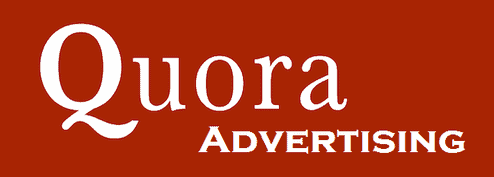
Quora Ads offer a unique approach by allowing advertisers to reach an audience seeking knowledge and advice. This platform is excellent for establishing thought leadership and targeting users based on their interests and the questions they are asking.
- Contextual Targeting: Target users based on the content of questions and topics they follow.
- Knowledge-Seeking Audience: Reach an audience actively seeking information, making ads more relevant.
- Variety of Ad Types: Includes image ads, text ads, and promoted answers.
Real-Life Example: A financial advisory firm used Quora Ads to target individuals seeking investment and personal finance advice. By answering relevant questions and promoting their services, they were able to build credibility and attract high-quality leads interested in financial planning. The platform’s focus on content and expertise helped them connect with a targeted audience.
Pricing Explained: Quora Ads uses a cost-per-click (CPC) pricing model, where advertisers only pay when users click on their ads. The platform allows detailed targeting and bid adjustments based on the advertiser’s goals. Quora also provides flexibility in budgeting, with options to set daily or lifetime budgets for campaigns.
6. TikTok Ads

TikTok Ads have emerged as a powerful platform for reaching a younger, highly engaged audience through short-form video content. This platform is ideal for brands looking to tap into viral trends and creative storytelling. With its rapidly growing user base, TikTok offers a unique blend of entertainment and marketing opportunities, particularly for brands aiming to connect with Gen Z and millennials.
- Engaging Video Format: TikTok’s focus on short, creative videos offers a dynamic way to showcase products and services.
- Young, Active Audience: Reach a predominantly younger audience who spend considerable time on the app.
- Viral Potential: Content on TikTok has a high potential for virality, offering brands massive organic reach.
Real-Life Example: A cosmetics brand leveraged TikTok Ads to promote a new line of skincare products. By creating engaging, tutorial-style videos and participating in prevalent challenges, they successfully reached a broad, younger audience. The campaign’s interactive nature increased brand awareness and significantly boosted online sales.
Pricing Explained: TikTok Ads operates on a bidding model similar to other social media platforms, with options for cost-per-click (CPC), cost-per-thousand impressions (CPM), and cost-per-view (CPV) for video ads. Advertisers can set daily or total campaign budgets, providing flexibility in spending. The platform also offers various ad formats, including in-feed ads, branded hashtags, and brand takeovers, each with different pricing structures to accommodate multiple marketing goals.
7. Pinterest Ads

Pinterest Ads provide a unique opportunity for businesses to reach an audience actively seeking inspiration, ideas, and products. This platform is particularly effective for lifestyle, home decor, fashion, and food brands. With its visually rich format, Pinterest is not just a social network but also a powerful search and discovery engine.
- Visually Driven Platform: Ideal for brands with strong visual content to inspire and attract users.
- Intent-Driven Audience: Pinterest users often plan purchases, making it a valuable platform for driving sales.
- Long Shelf Life of Pins: Content on Pinterest tends to have a longer lifespan than other social media platforms, offering prolonged visibility.
Real-Life Example: A home decor company used Pinterest Ads to showcase its furniture and accessory collections. By creating visually appealing pins and targeting users searching for home decoration ideas, it drove significant traffic to its website. The platform’s ability to save and share pins resulted in extended engagement and repeat visits.
Pricing Explained: Pinterest Ads uses a cost-per-click (CPC) model, allowing advertisers to pay only when users click through to their website. There is also a cost-per-thousand-impressions (CPM) option for brand awareness campaigns. The platform offers the flexibility to set daily and lifetime budgets, making it accessible for businesses of all sizes. Advertisers can also choose different ad formats, such as Promoted Pins, Promoted Carousels, and Promoted Video Pins, each tailored to specific marketing objectives and budgets.
8. Reddit Ads
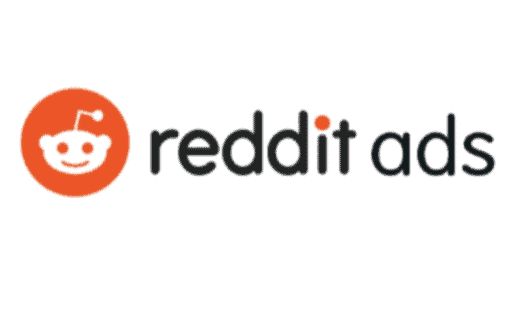
Reddit Ads offer a unique way to engage with one of the internet’s most active and diverse communities. Known as “the front page of the internet,” Reddit consists of many forums (subreddits) covering various topics and interests. This platform is ideal for brands that want to connect with niche audiences in a more conversational and community-driven environment.
- Niche Targeting: Reach specific communities based on interests, hobbies, or topics, ensuring highly relevant audiences.
- Engaged User Base: Reddit users are known for engaging and participating in discussions.
- Variety of Ad Formats: Offers different ad formats suitable for various campaign objectives, including sponsored posts and display ads.
Real-Life Example: A gaming company used Reddit Ads to promote a new video game. They targeted specific gaming subreddits and engaged with the community through sponsored posts that sparked discussions and interest. This approach increased awareness about their game and built community and loyalty among potential customers.
Pricing Explained: Reddit Ads operates on a cost-per-click (CPC) or cost-per-impression (CPM) model, allowing advertisers to choose the pricing structure that best fits their campaign goals. The platform offers flexibility in terms of budget, with options to set daily or campaign caps. The cost can vary based on the target audience’s size and the competitiveness of the ad space within specific subreddits. Advertisers can also participate in the bidding process to determine the placement of their ads.
9. Bing Ads
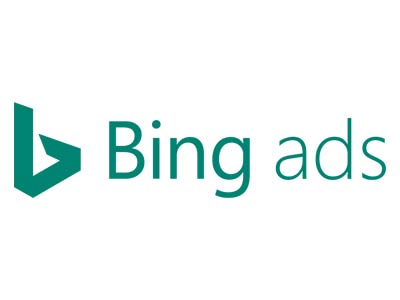
Bing Ads, now known as Microsoft Advertising, presents a viable alternative to Facebook Ads, especially for reaching audiences that predominantly use the Bing search engine, which often includes older and more affluent demographics. This platform is integrated with other Microsoft and partner services, offering various advertising opportunities across search engines and websites.
- Access to a Different Audience: Reach users who prefer Bing over Google, often including an older and more affluent demographic.
- Lower Competition: Generally, there’s less competition on Bing, potentially leading to lower cost-per-click rates.
- Integration with Microsoft Products: Ads can appear across Microsoft’s network, including MSN, Yahoo, and other partner sites.
Real-Life Example: A travel agency specializing in luxury vacations used Bing Ads to target an older demographic with higher disposable income. By focusing on keywords related to luxury travel and destinations, they were able to attract a significant number of bookings. The lower competition on Bing also allowed for more cost-effective ad spending than Google Ads.
Pricing Explained: Bing Ads, like Google Ads, operates on a pay-per-click (PPC) model, where advertisers bid on keywords and pay each time a user clicks on their ad. The costs can be lower due to less competition, and advertisers have control over their daily budget and maximum bid for each keyword. Additionally, Bing Ads allows running ads on a cost-per-thousand-impressions (CPM) basis, giving flexibility in how campaigns are structured and budgeted.
10. YouTube Ads

YouTube Ads offer a unique platform for reaching audiences through video content on the world’s largest video-sharing website. This Google-owned service is ideal for businesses seeking to engage users with compelling visual stories and messages. YouTube’s diverse and extensive user base allows for broad and niche targeting, making it a versatile choice for many advertising campaigns.
- Engaging Video Format: Leverage the power of video to capture attention and convey messages effectively.
- Vast Audience Reach: Access to a wide range of demographics, interests, and behaviors across the globe.
- Varied Ad Formats: Choose from several ad formats like skippable in-stream ads, non-skippable ads, bumper ads, and video discovery ads.
Real-Life Example: A fitness equipment manufacturer used YouTube Ads to promote their home workout gear. By creating engaging and informative video content, they could effectively showcase their products’ features and benefits. Their campaign reached a large audience of fitness enthusiasts, resulting in increased brand recognition and a surge in online sales.
Pricing Explained: YouTube Ads use a cost-per-view (CPV) model where advertisers pay for each view or interaction with their ad. The definition of a ‘view’ depends on the chosen ad format – for instance, in skippable ads, a view is counted if the user watches 30 seconds or interacts with the ad. Advertisers can set daily budgets and bidding strategies based on their campaign objectives. Additionally, there are options for cost-per-thousand impressions (CPM) and cost-per-click (CPC), providing flexibility to suit different advertising needs and budgets.
Unlock New Advertising Opportunities
While Facebook Ads remain a powerful tool for online advertising, exploring alternative platforms can unlock new opportunities and help businesses reach diverse audiences more effectively. Platforms like Google Ads, Instagram, LinkedIn, TikTok, and others discussed in this article offer unique features and targeting capabilities that cater to specific demographics and marketing goals.
By diversifying your advertising strategy and leveraging these alternatives, you can optimize your marketing efforts, enhance engagement, and achieve better results tailored to your business objectives.
Suggested articles:
- Facebook Ads: 10 Cons & Disadvantages
- Understanding Geofencing: The Future of Targeted Advertising
- 10 Pros and Cons of Pay-Per-Call Advertising For Lead Generation
Daniel Raymond, a project manager with over 20 years of experience, is the former CEO of a successful software company called Websystems. With a strong background in managing complex projects, he applied his expertise to develop AceProject.com and Bridge24.com, innovative project management tools designed to streamline processes and improve productivity. Throughout his career, Daniel has consistently demonstrated a commitment to excellence and a passion for empowering teams to achieve their goals.